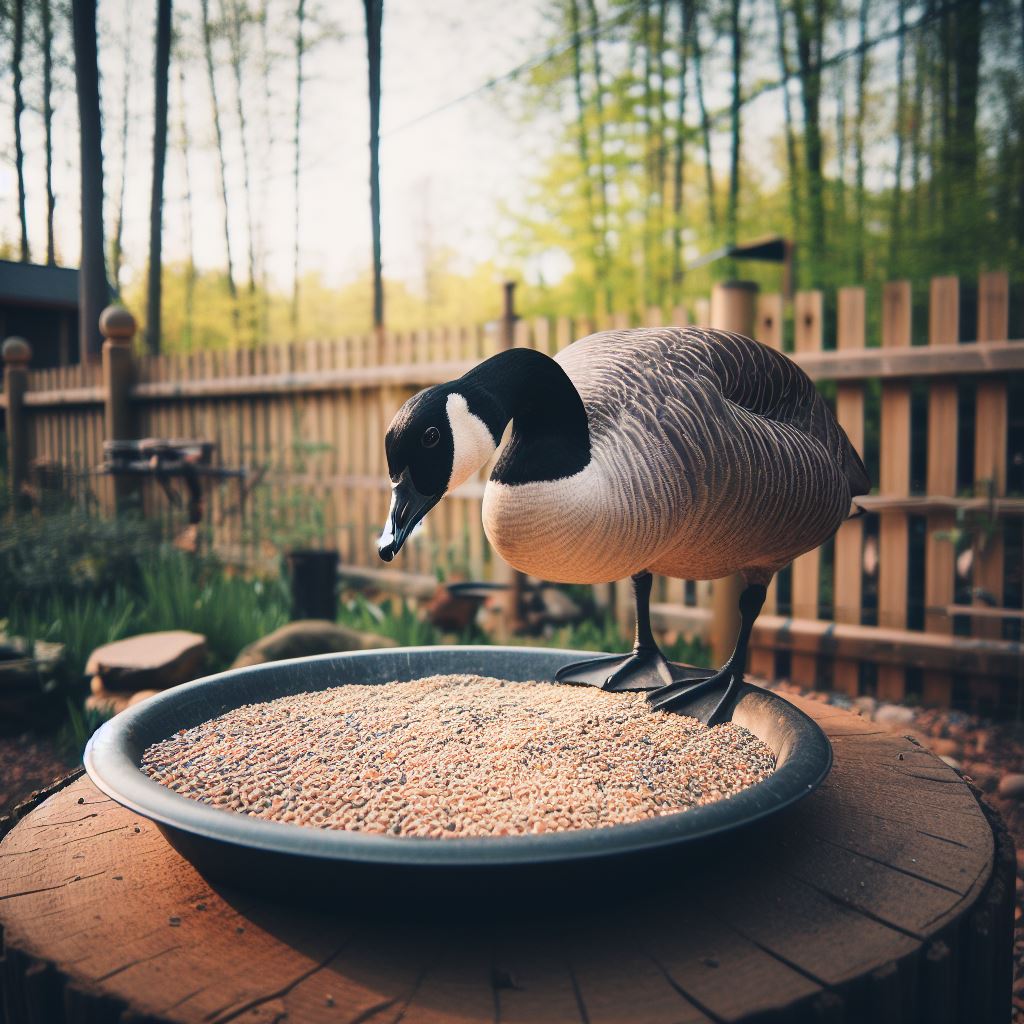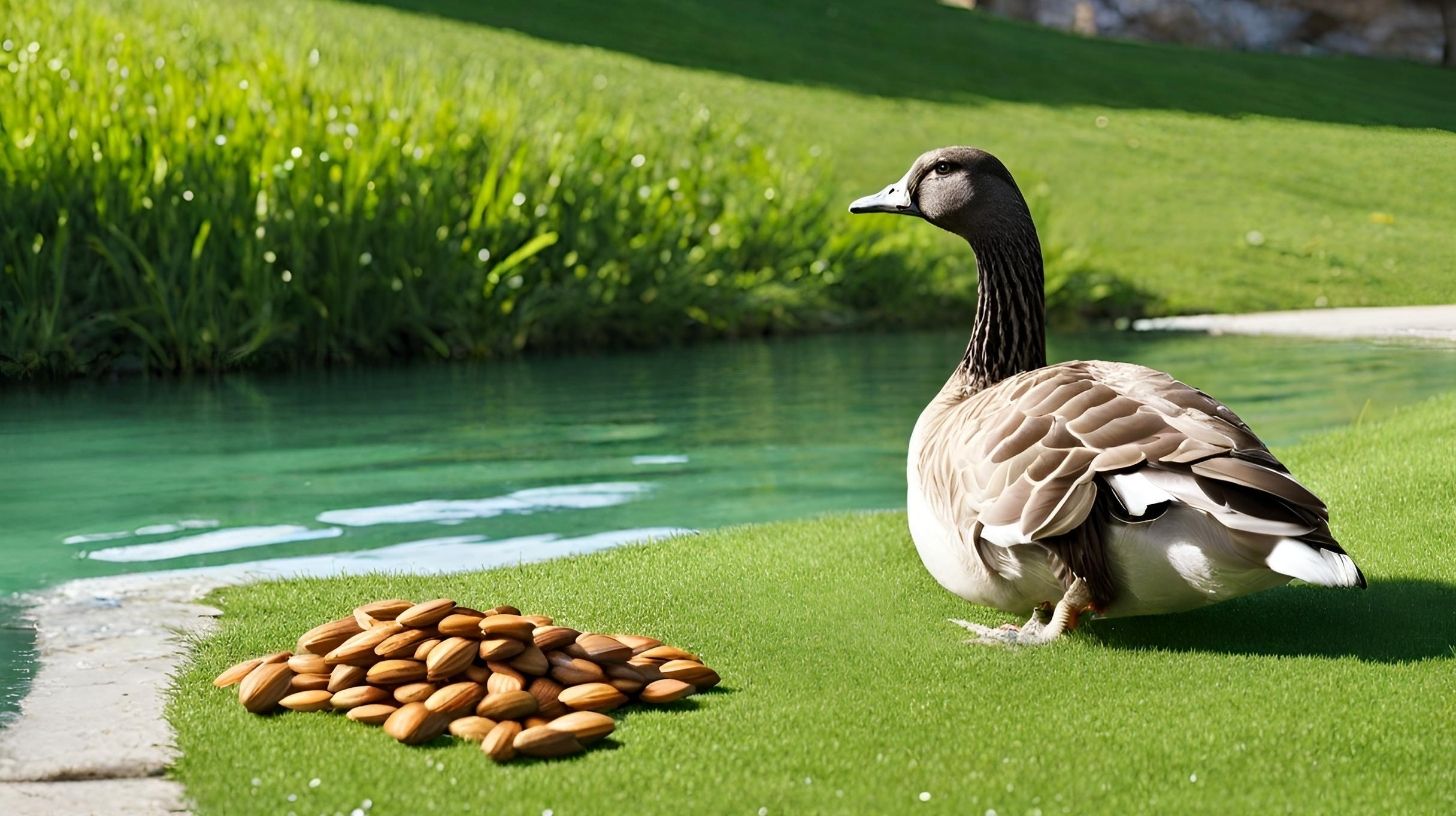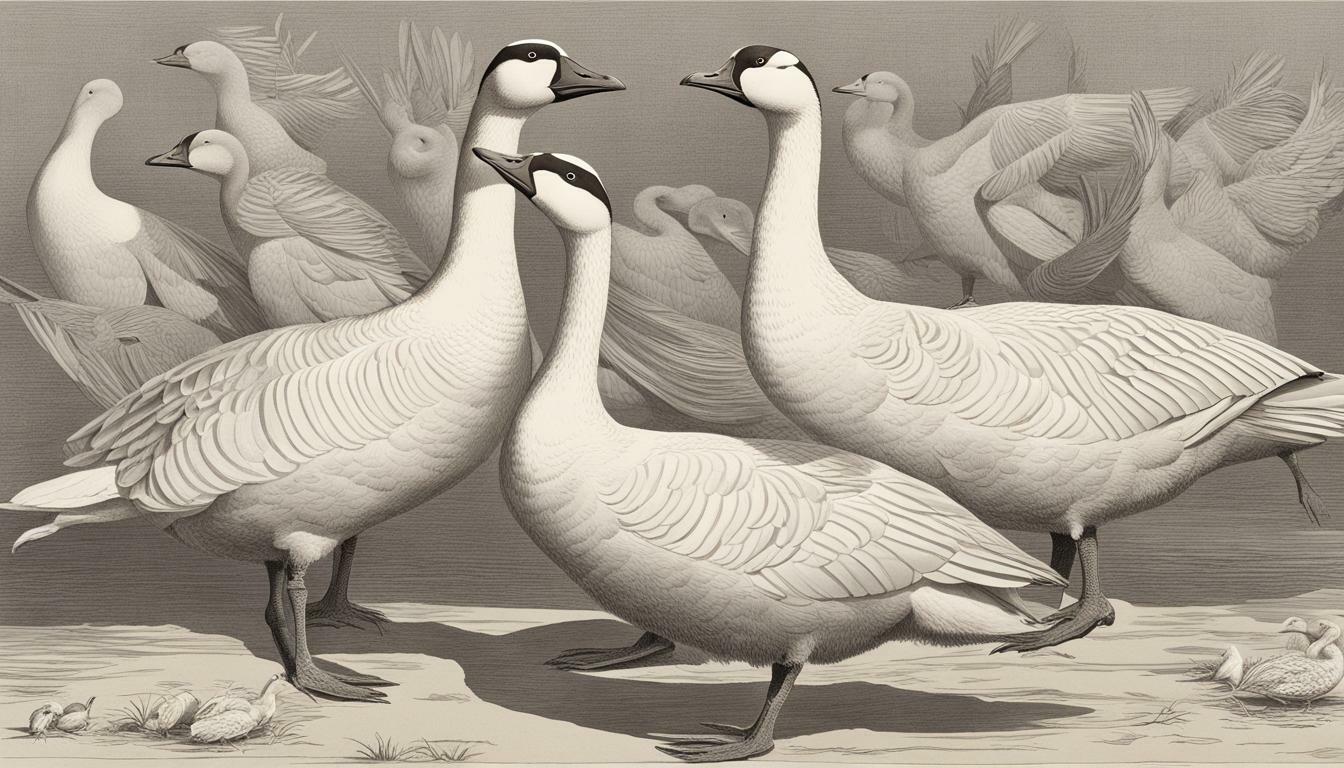Do Geese Fly in the Rain? Discover Nature’s Mysteries

Table of content:
- Can Geese Fly in the Rain?
- Is It Harder for Geese to Fly in Heavy Rain?
- How Does Feather Structure Help Geese Fly in Rain?
- Do Geese Avoid Flying in Heavy Rain?
- How Does Rain Affect Geese Takeoff and Landing?
- Do Geese Fly Differently in Rain?
- Why Do Geese Have to Fly in Rain?
- How Far Can Geese Fly in Rain?
- Why Don’t Geese Get Lost in Rainstorms?
- Do Geese Ever Crash Land in Rainstorms?
- How Does Rain Impact Geese Care of Goslings?
- Are Some Geese Better at Flying in Rain?
- Can Geese Drown if They Land in Water While Raining?
- Do Wet Feathers Disable Geese From Flying?
- How Does the Cold Factor Into Geese Flying in Rain?
- Do Goslings Get Cold When Their Down Gets Wet Flying in Rain?
- Final Thoughts
Geese are amazing birds that can fly even in rainy weather. Their ability to take flight in the rain is due to their unique feather structure and light bone structure. Geese have evolved over time to be able to migrate vast distances in all kinds of weather.
Can Geese Fly in the Rain?
Yes, geese are able to fly even when it’s raining heavily. Their feathers overlap and interlock to form a waterproof barrier. This allows the geese to stay dry and maintain the ability to fly.
Geese feathers contain oil that helps repel water. The outer vanes of the feathers overlap tightly to prevent rain from getting through. The downy under-feathers further insulate the goose against wetness and cold.
Why Geese Can Fly in Bad Weather
- Geese have lightweight, hollow bones which reduces their overall body weight. This enables them to take flight with less effort.
- They have powerful chest muscles to generate the required thrust and lift for flight.
- Their wings are shaped to provide aerodynamic lift even when soaked.
- Geese fly together in a V-formation during migration. This allows them to take advantage of the uplift from the birds in front. It reduces air resistance and the effort required for flight over long distances.
Is It Harder for Geese to Fly in Heavy Rain?
Flying in heavy rain is more challenging for geese compared to flying in normal weather conditions. However, geese are well adapted to take flight even during downpours.
- Heavy rain can weigh down their feathers slightly. But their streamlined body structure and light weight help overcome this.
- Geese may have to work harder to generate greater thrust to stay aloft. But their powerful chest muscles provide the required power.
- High winds associated with rainstorms can buffet the birds. But flying in formation reduces exposure to crosswinds.
- Raindrops pattering on their wings cause some disturbance. But their aerodynamic wing shape allows them to continue flying steadily.
- Reduced visibility in heavy rain makes navigation more difficult. But geese can still orient themselves through senses like hearing and smell.
How Does Feather Structure Help Geese Fly in Rain?
Geese have specialized feathers that serve as an in-built raincoat, allowing them to fly through precipitation:
Overlapping Tight Feathers
- The feathers along the geese’s body and wings overlap tightly. This prevents rainwater from seeping through.
- The tips of the feathers have a comb-like structure. This creates a sealed barrier without any gaps.
- The interlocking barbules on adjacent feathers zip them together. This provides an impermeable surface.
Oil on Feathers
- Geese feathers are coated with preen oil secreted from their uropygial gland.
- This oil forms a hydrophobic layer, causing water to bead up and roll off the feathers.
- The oil maintains the flexibility and water repellency of the feathers.
Fluffy Under-Feathers
- The downy undercoat beneath the exterior feathers provides insulation.
- The undercoat remains dry, trapping air to retain body heat.
- The undercoat fluffiness and air pockets give buoyancy to stay afloat if they land on water.
Do Geese Avoid Flying in Heavy Rain?
Geese are remarkably resilient birds that will fly even during heavy downpours when necessary. Here are some reasons geese may continue flying in rain:
- Geese in the midst of migration will try to cover as much distance as they can each day. They will usually not stop flying due to rain alone.
- Geese fly south in fall and north in spring following optimal temperatures. This schedule is ingrained, so they are motivated to migrate rain or shine.
- If they have a strong tailwind and poor landing spots, geese may opt to push on through rainfall.
- Geese may sometimes land if rainfall is severe. But if conditions look promising to improve, they may resume flight.
- Adult geese will keep flying in rain if goslings can handle the wetness and wind.
- For short hops like between feeding spots, geese will readily fly in light or moderate rain.
How Does Rain Affect Geese Takeoff and Landing?
The slick wetness from rain can make takeoffs and landings more hazardous for geese. However, they have adaptations to maintain stability even in wet conditions:
Takeoff in Rain
- Geese will run across the water, flapping wings to build speed before becoming airborne.
- Their feathers stay aligned and firm, providing lift despite the dampness.
- They rapidly beat their powerful chest muscles to generate thrust.
- Webbed feet provide traction on wet surfaces for ground takeoffs.
Landing in Rain
- Geese spread their tails and feet to increase drag when approaching to land.
- They extend their legs and necks forward to maintain balance on touchdown.
- Webbed feet serve as water brakes once they land on water or mud.
- They flap their wings to stabilize if crosswinds or turbulence destabilize their landing.
Do Geese Fly Differently in Rain?
Geese adopt some modifications in flight styles and habits when flying in wet conditions:
- They may fly a bit lower, under 1000 ft elevation, to avoid icing at higher altitudes.
- Geese angle their bodies more forward in rain to streamline themselves.
- They may fly a bit slower and more steadily to contend with air disturbances.
- Geese flap their wings more frequently in the rain for extra thrust and stability.
- In heavy rain, geese opt for short bursts of flapping punctuated by brief gliding.
- They rely more on soaring and gliding in rain to conserve energy.
- Geese may alter their characteristic V-formation pattern to double-line formation in rain and wind.
Why Do Geese Have to Fly in Rain?
Geese demonstrate an amazing ability to fly in rain when necessary because of:
Migration Pressures
- Geese travel thousands of miles annually between nesting and wintering grounds.
- Their migrations follow rigid schedules tied to seasonable changes and food availability.
- Favorable tailwinds support long flights, even if rainy. Stopping migration is risky.
Feeding Requirements
- Geese need to feed frequently, requiring daily flights between roosting and feeding grounds.
- Wet grasslands provide ideal grazing after rain, incentivizing goose flocks to fly out to feed.
Weather Changes En Route
- Geese may get caught in rain showers during long migrations. Landing is not always an option over oceans or deserts.
- Shifting storm fronts mean clear weather at takeoff can turn inclement mid-flight.
Social Cohesion
- Geese mate for life and migrate together in family units and larger flocks.
- Individual geese will continue flying in the rain to stay with flock mates. Stragglers risk predation.
How Far Can Geese Fly in Rain?
Geese are capable of flying hundreds of miles in a day’s flight span even in wet, windy conditions:
- Geese can fly at speeds averaging 40-60 mph depending on wind factors. Sustained flights typically cover 300-400 miles daily.
- Record long-distance goose migration flights have exceeded 700 miles in a day.
- Heavy rain may lower geese’s ground speed somewhat. But motivations to reach migration endpoints enable them to fly all day.
- The energy-saving V-formation allows geese to fly efficiently even in rain. The uplift from other birds helps compensate for wetness drag.
- Geese stop periodically to rest and feed. This recharges them for subsequent takeoffs and more miles covered as needed in rainy weather.
- If necessary, geese can fly 1000 miles or more nonstop over oceans and deserts, using reserves in breast muscles to power through rain.
Why Don’t Geese Get Lost in Rainstorms?
Geese manage to stay on course even when flying through rain and storms. Here are some navigation aids that help:
- Geese orient themselves based on the position of the sun, even if obscured behind clouds and rain. Their circadian rhythms stay aligned.
- Geese can detect magnetic fields and use magnetoreception to maintain their bearing direction.
- The birds use landscape contours and landmarks like rivers, mountains, or coastlines to navigate.
- Geese follow habitual migration routes between seasonal ranges. These are imprinted so they recall the paths.
- Longer daylight hours in spring and fall trigger migration urges along accustomed north-south routes.
- Geese may get temporarily blown off course but can self-correct once winds ease.
- If visibility deteriorates, geese can land until rain passes rather than risk going astray.
Do Geese Ever Crash Land in Rainstorms?
Geese are remarkably resilient fliers even in heavy rain and high winds. Their excellent maneuverability and flight control enable safe landings.
- Geese avoid flying in the most severe weather if possible. This reduces any chance of crash landings.
- In turbulent conditions, geese adapt by descending to lower, smoother air layers closer to the ground.
- Geese extend their wings and feet forward before touching down. This creates drag and stability if hitting ground hard.
- Geese sometimes land on water in heavy rain. Their buoyancy and water resistance precludes crash potential.
- Geese swim well and can taxi to shore. Webbed feet provide paddling traction.
- In worst case scenarios, geese may tumble or roll on landing without injury due to durable feathers.
- Overall, geese have excellent flight and landing capabilities honed over eons. Crash landings are highly uncommon except in extreme weather events.
How Does Rain Impact Geese Care of Goslings?
Parent geese take special measures to protect goslings when flying in rain:
- If downpours are heavy, parent geese may opt to lead goslings on foot to shelter rather than fly.
- Parent geese fly in front of goslings during flight to shield them from prevailing winds and rain.
- If goslings become rain-soaked and chilled, parents may cut flights short and land until conditions improve.
- Upon landing, parents use their wings to provide cover for goslings until they warm up and dry out.
- Parent geese keep goslings safe under their feathers while anchored on nests during rain.
- If landing on water in the rain, parents allow goslings to rest on their backs and stay dry.
- Goslings get quickly waterproofed with oil from their parents’ uropygial glands. This insulates them in wetness.
Are Some Geese Better at Flying in Rain?
Some goose species and individual birds do demonstrate the advantages of flying in soggy conditions:
Larger-Bodied Geese
- Larger goose species like Swan Geese and Snow Geese can power through rain and wind more easily with their strength.
- Their bulkier muscles generate enough thrust despite the dampening effect of rain.
- Smaller goose species compensate by flying in tighter formations for efficiency.
Experienced Adult Geese
- Older geese have learned from previous experience flying in rain over many migrations.
- Younger first-year geese may have more difficulty navigating or stamina in downpours.
- Skilled adult leaders guide the flock by example on the best techniques in rainy weather.
Storm-Tested Individuals
- Certain individual geese inevitably perform better when flying in wind and rain.
- These “storm geese” often lead the flock by example through adverse conditions.
- Biological factors like feather density, muscle strength, or vision/hearing acuity may confer rain-flight advantages.
Can Geese Drown if They Land in Water While Raining?
Geese are excellent swimmers, so the risk of drowning in rain is very low if they land on water:
- Geese have waterproof, buoyant plumage that keeps them floating high.
- They can swim well using their webbed feet to paddle efficiently.
- Geese often deliberately land on water bodies to feed, rest, and roost.
- If needed, geese can flap their wings while in water to propel forward.
- Geese may land on water if grounded by low visibility in storms. This poses no drowning risk to them.
- Wave action or turbulent waters could potentially overwhelm younger goslings. But parents stay protectively close.
- Strong swimmers like geese could only drown in the most severe flooding or tsunami scenarios, which are very rare events.
Do Wet Feathers Disable Geese From Flying?
Geese’s feathers retain most of their aerodynamic function even when soaked by rain. But geese still try to keep feathers as dry as possible:
- The feather parts that provide waterproofing and structure stay intact when wet.
- However, prolonged exposure to rain can degrade feathers over time. The edges fray and barbules distort.
- Oils that are waterproof and flexibilize feathers can wash away with heavy wetting. This needs to be restored.
- Excess water weight on the feathers hinders lift capabilities for takeoff and flight.
- Wet feathers are more prone to parasites like lice. These can get embedded and damage feathers.
- On land, geese preen and shake out feathers to dry them after storms.
- Geese may avoid landing in areas with little cover to dry off after rainy flights.
How Does the Cold Factor Into Geese Flying in Rain?
Flying in combined cold rain and wind chills poses risks of hypothermia for geese. But geese have adaptations to maintain warmth:
- Insulating down feathers beneath the exterior plumage retains body heat even if the outer feathers get wet.
- Geese hunch their shoulders to fluff up down feathers for warmth when flying in cold precipitation.
- Fat reserves and thick skin beneath feathers provide insulation from cold.
- Blood vessels in geese’s legs serve as heat exchangers to prevent chills and keep critical organs warm.
- Feather density increases for geese living in colder climates. Their feathers have more interlocking barbs and fusi to retain warmth.
- Shivering warms geese internally by rapid muscle contractions. They may shiver while airborne.
- If it gets too cold, geese can opt to land and wait out the hypothermic conditions.
Do Goslings Get Cold When Their Down Gets Wet Flying in Rain?
Goslings face higher risks of chilliness from wet, cold conditions. But adaptations help them retain warmth when flying in rain:
- Goslings’ down feathers are highly insulating and cling tightly when wet. This helps retain warmth.
- Feather density in goslings increases faster when they hatch in colder northern climates. This gives more protection.
- Parent geese position themselves to shelter goslings from chilling precipitation during flight.
- On the ground, goslings huddle under parent geese’s brooding wings to dry off and warm up.
- If goslings get wet and chilled, parents may halt migration until they recover thermal equilibrium.
- As they grow, goslings gradually gain more fat insulation and double-layered waterproof feathers.
- By 8-10 weeks old goslings have adult-like feathering and cold tolerance for wet flights.
Final Thoughts
Geese are remarkable for their ability to remain airborne and cover long distances even during rainy or stormy weather. Their specialized feather structure repels precipitation while also retaining warmth and buoyancy if forced to land in water. While geese may make some alterations in their speed, formation, and flapping methods when flying in rain, they are well equipped both physically and instinctually to contend with wet conditions.
Their long-distance migration capabilities remain robust even in unfavorable winds and downpours. Careful feather maintenance and insulating body adaptations allow geese to continue their journeys and respond to seasonal habitats despite the challenges of rainfall. The resilience of geese in weathering all types of aeronautical conditions is a testament to the evolutionary nuances that enable their extraordinary migrations across immense terrain.
Welcome. I’m Adreena Shanum, the proud owner of this website, and I am incredibly passionate about animals, especially poultry. I founded adreenapets.com as a labor of love, stemming from my desire to share my knowledge and experiences with poultry enthusiasts worldwide.




